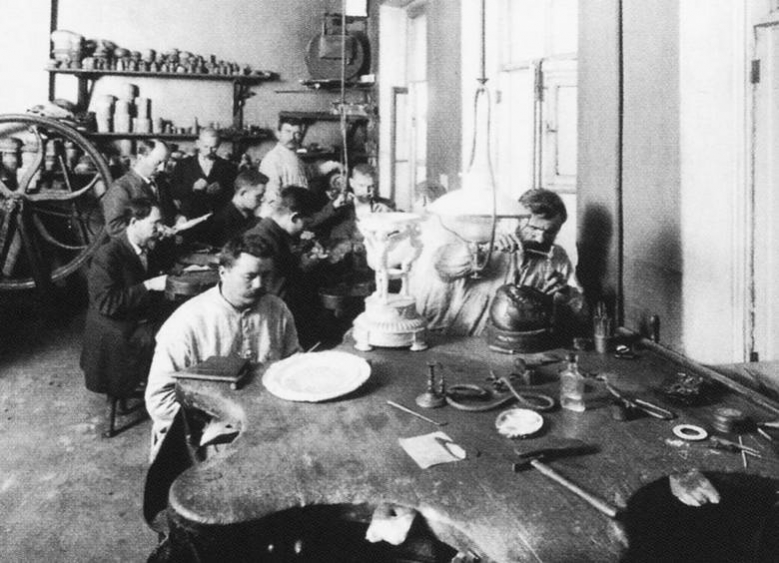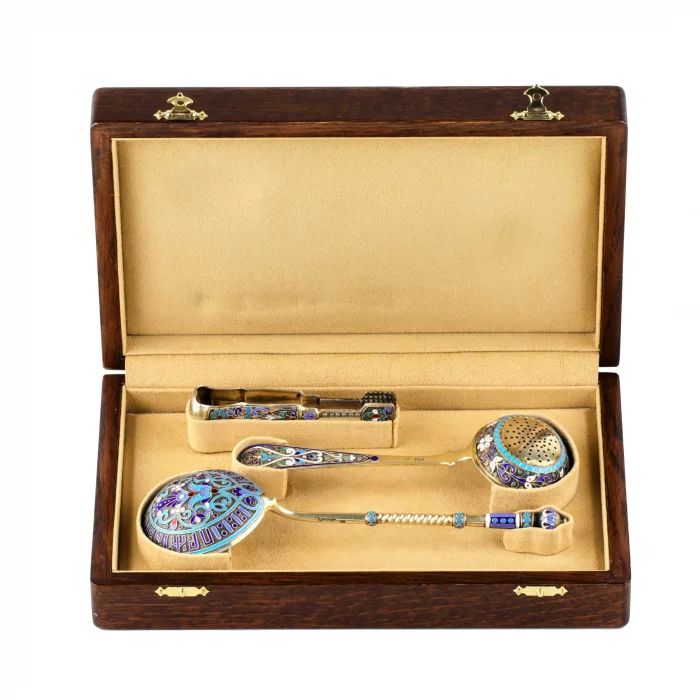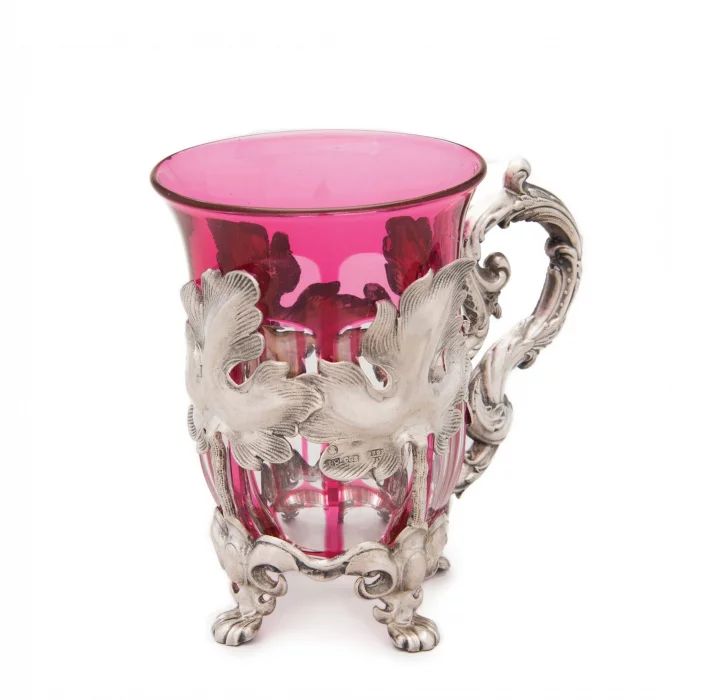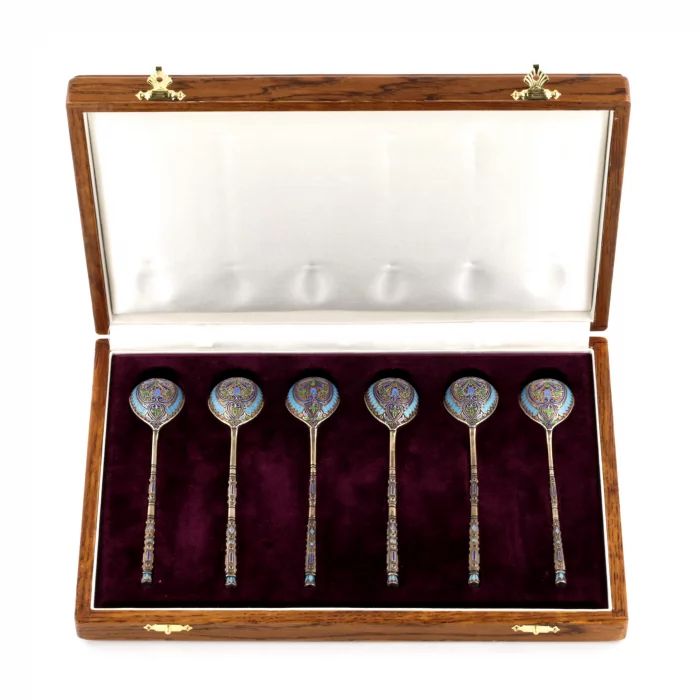Exquise théière-samovar en argent, Saint-Pétersbourg, début du 20e siècleMaîtres du premier artel d`argentL`exquise théière-samovar, fabriquée dans les ateliers du premier artel d`argent à Saint-Pétersbourg au début du 20e siècle, est un exemple exceptionnel d`art russe. classicisme. Ce samovar, qui était un attribut invariable du dressage de table, se distingue par sa décoration complexe en relief et son motif tridimensionnel, reflétant le plus haut savoir-faire des bijoutiers de l`époque. Le corps du samovar, de forme hémisphérique, est monté sur. un support rectangulaire reposant sur des pieds en forme de pattes de lion. Ces éléments soulignent la monumentalité de l`objet et son lien avec les traditions de l`art de l`argenterie européenne, particulièrement populaire en Russie dans la première moitié du XIXe siècle. La partie centrale est ornée d`une palmette en relief et d`un décor en spirale, conférant au samovar un caractère particulier. richesse décorative. Le robinet bas, conçu en forme de tête de lion, souligne la richesse et la symbolique du produit. L`épaule du samovar, qui se transforme en douceur en couvercle à charnière, est également décorée d`un motif géométrique, et son pommeau est une pomme de pin stylisée - un motif populaire dans les arts décoratifs de cette époque. Les poignées latérales incurvées, décorées d`un décor sculptural en forme de têtes de lion, rehaussent la monumentalité globale de la composition. Le samovar incarne les expérimentations des maîtres du Premier Artel d`Argent avec des formes et des motifs inspirés des célèbres produits des maîtres anglais de l`époque. XIXe siècle, en particulier les œuvres du grand Paul Storr (Londres, 1771-1844). Cet article représente la fusion des styles russe et européen, caractéristique des traditions de joaillerie de l`atelier de Julius Rappoport, et plus tard du Premier Artel d`Argent. Leurs artisans ont créé une large gamme de produits : des petits meubles de bureau aux vases, candélabres et même de grands éléments de décoration d`apparat pour les tables à manger, appelés surtout de table. (surtout de table).Poinçons : Poinçon du Bureau d`analyse du district de Moscou avec les initiales du directeur Ivan Sergeevich Lebedkin (nommé en 1899) ; Un timbre représentant une tête de femme dans un kokochnik, tourné vers la gauche, avec les initiales « IL » et le poinçon « 84 », datant de la période 1899-1908 ; La marque du Premier Silver Artel (« ICA »), actif au début du XXe siècle à Saint-Pétersbourg.Dimensions : Hauteur 33 cm. Poids du produit : 2620 grammes.
Période:
Fin Du 19Ème Siècle
The condition report is provided for informational purposes only.
It is not comprehensive and may not reflect all defects, restorations, alterations, or adaptations, as Antiqon does not perform professional conservation-level assessments. The information is based on a qualified, yet subjective, evaluation by our specialists.Before purchasing, we recommend consultation with an independent expert.Please also consult our Terms and conditions and Glossary A-Z, which contain important information on lot characteristics and sale conditions.










































